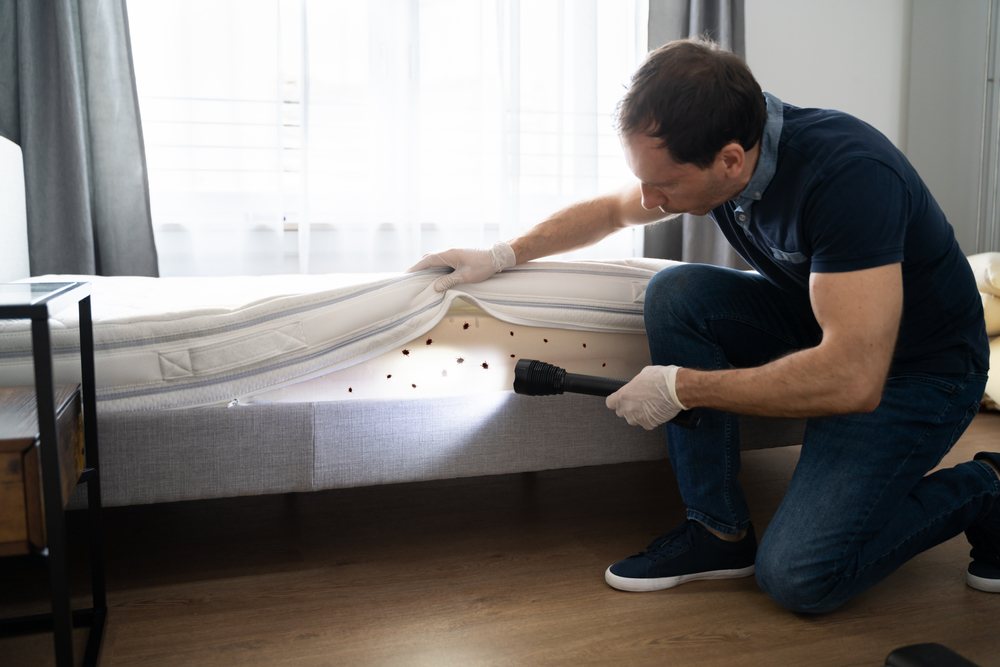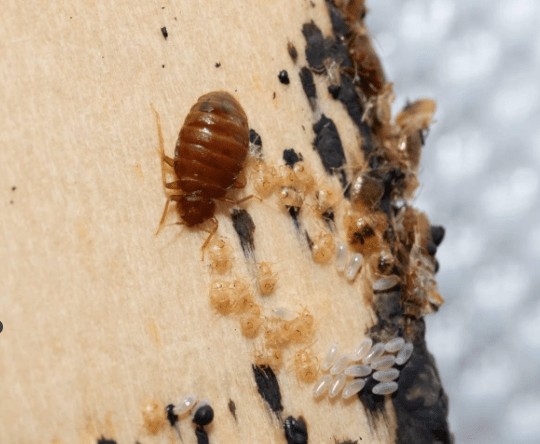People often cringe when they hear about bed bugs, especially at the thought of experiencing an infestation in their own home.
But the truth is…
Most people don’t know that much about bed bugs.
Whether it be prevention, identification, or removal, it’s tough to know where to start.
A 2018 study by Bugs Without Borders indicated that:
Out of all of the similar pests (fleas, cockroaches, mosquitos, lice etc.)
Bed bugs are by far the hardest to remove.
This is why we are in the midst of a bed bug epidemic.
With reported infestations in all 50 states, and bed bug reports that span across 6 continents.

So, this brings us to the question…
How do I prevent bed bugs from getting into my home?
Let’s answer that very question, and dive into some of the best methods of bed bug prevention, along with some interesting bed bug facts along the way.
Page Contents:
Bed Bug Prevention
Since bed bugs can infest anywhere, there is not a 100% full proof method of preventing a potential infestation.
A common misconception is that keeping your home clean and free of clutter will prevent bed bugs.
This is actually NOT true.
Keeping your home clean is a method of early identification, because it gives bed bugs less places to hide, but it does not prevent them from entering your home initially.
That’s why both 5-star hotels along with run down apartments are equally vulnerable to bed bugs.

Though we shouldn’t downplay early identification.
Because identification is key to preventing an infestation from becoming severe.
If you can take action on early signs of bed bugs, you can stop an infestation from spreading to the point of no return.
This leads to our first method of prevention.
Which is…
Learn the Signs of an Infestation
If you educate yourself on signals and indicators of an infestation…
You can discover bed bugs early and take swift action.
This is the easiest way to stop yourself from having a full-blown crisis.
Here are some of the common signs of bed bugs:
Skin irritation or bites on your body. If you feel like your “skin is crawling” or notice unsightly welts in clusters around your upper body, this could be a clear indicator of bed bugs.

Click here to learn more about what bed bug bites look like.
Spots on your bedding. If you see red or brown dots on your bed, this could be a sign of blood or bed bug droppings.
A distinct smell. Bed bugs let out a certain pheromone called histamine, which smells like a mix of coriander and old shoes.
(it’s quite unpleasant).
Therefore, if you do notice a certain smell coming from the bedroom it could be a sign of a severe infestation.
Protect Your Mattress
Because bed bugs prefer to live within 8 feet of their hosts, they tend to live around your mattress. Bed bugs will live in hidden areas such as cracks within the bed frame, or within folds of the mattress.
One way to protect your mattress from bed bugs is through protective mattress encasements.
These special mattress covers are designed to trap bed bugs inside.
(So that they eventually starve to death).
Any bed bugs that are outside of the mattress will no longer be able to hide within the folds of the mattress making it more difficult for them to feed on you at night.
Note: If you do buy one of these covers make sure they have a tight seal and that you cover the box spring as well.

Another way to protect your bed is to replace your mattress and box spring every 3 to 5 years.
This can seem like it’s fairly often, but this strategy will eliminate the problem at the source.
Bed bugs can be infesting your bed without you knowing, and it’s extremely difficult to determine where they are…
Or how many have gotten in your bed.
Note: Bed bugs can stay dormant for up to a year without feeding. This is why an infestation can reoccur months after it has been initially dealt with.
Vacuum Carpets & Rugs
Bed bugs are small creatures (about ¼ inch in length) with flat bodies. This small frame can be difficult to spot when around carpet.
This is why you should vacuum weekly.
If you suspect that you may have an infestation…
You should up the frequency to daily.
After you finish vacuuming you need to be careful with the vacuum contents.
(Because there could be live bed bugs in there).

When emptying the vacuum make sure to follow these steps:
- Carefully open the vacuum and dispose of contents into a sealed plastic bag.
- Remove the plastic bag from your home immediately, and place into an outdoor dumpster.
- Inspect the vacuum and make sure there are no active bugs around it.
Note: If you fail to empty the vacuum cleaner afterward, you’re in danger of allowing the trapped bugs to escape and further spread.
Be Cautious with Used Furniture
Many pest control websites talk about how you should avoid used or discarded furniture at all cost because it could be infested with bed bugs.
Though this may be the case…
Used furniture is so much cheaper!
And we completely understand taking advantage of used furniture to save money.
The thing is you don’t need to avoid this type of furniture entirely, but rather know what to look for to ensure used furniture is safe to bring inside your home.
Many used furniture stores have dealt with complaints and lawsuits over bed bugs.
Including household names like:
If you do unfortunately experience bed bugs from buying furniture from one of those stores you may have a case for a lawsuit.
(If that’s the case, you should get in touch with a lawyer immediately).
To prevent bringing infested furniture into your home you should always inspect the furniture first.
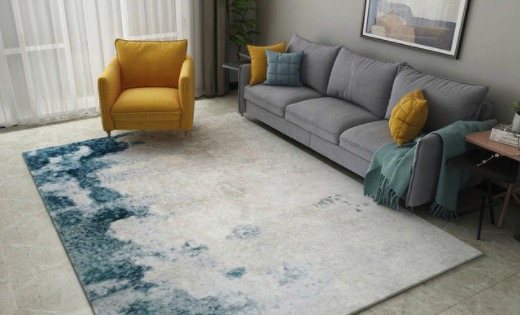
To properly inspect furniture…
Follow these steps:
Step 1:
Using latex gloves, run the edge of your finger across the creases or cracks of the furniture’s surface. As you do this watch for signs of bed bugs on your gloves or if any have fallen on the floor.
Step 2:
Use a flashlight to inspect any hidden or dark areas within or around the furniture. Bed bugs are always hiding, so look in creases or folds that aren’t readily visible.
Step 3:
Contact the owner of the furniture and ask whether it has been exposed to bed bugs in the past.
Remember…
bed bugs love to crawl into hard to reach places, so a thorough inspection is critical before deeming a piece of furniture safe to bring home.
Set Bed Bug Traps
A common misconception is that bed bug traps are used for bed bug removal.
In reality, traps cannot eradicate an infestation, but rather they can help discover, or mitigate the problem.
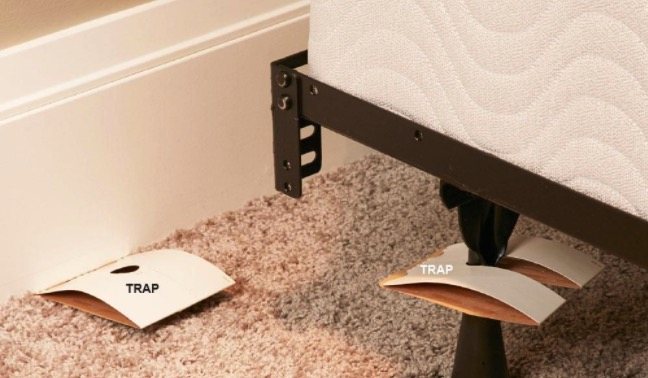
Therefore placing 1 or 2 traps around the bedroom is a proven way to prevent bed bugs because it helps with early detection.
Bed bug traps should be placed in various locations around your bed and then shouldn’t be moved. These creatures are most active at night so constantly moving a trap could inhibit bed bugs from going into them.
Here are the 3 different types of traps:
Interceptor Traps:
These traps are made to catch bed bugs on their way to a feeding. They should be placed at the foot of the bed and near the legs of the bed frame.
These are plastic traps with both an inner and outer wall that contains bed bugs.
(Though these traps don’t kill bed bugs right away).
Pheromone Traps:
These traps are made to attract bed bugs using a pheromone that typically mimics that of humans.
This confuses bed bugs and draws them inside the trap.
Both interceptor and pheromone traps have strong adhesive to keep bed bugs secure and unable to escape.
DIY Traps:
The beauty of bed bug traps Is that they are NOT complicated.
Therefore, it’s something you can easily make on your own.
Homemade bed bug traps can be just as effective and is the perfect solution for those that are on a budget.
The below video describes how to build a trap in detail.
Click here for our complete guide on bed bug traps.
How To Prevent Bed Bugs From Coming Back
To prevent bed bugs from coming back you need to ensure there are no leftover living bed bugs after treatment. This depends on the treatment method, but you should regularly inspect your home after treatment in search of any lingering insects.
If you used conventional treatment methods such as insecticides, you should ensure you had multiple follow-up treatments.
Unlike professional heat treatments, insecticide treatments require 3 to 5 sessions in order to fully eradicate an infestation.
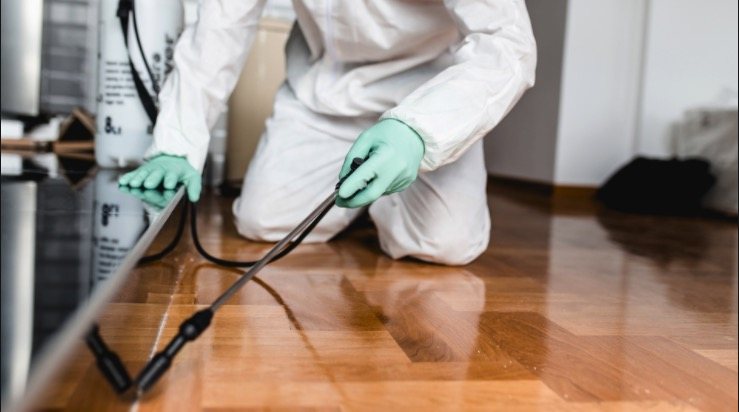
Along with your own home inspections, you should schedule follow-up inspections from a professional exterminator.
A certified pest control specialist will know to look into hard to reach places, as well as subtle signs that bed bugs leave behind.
You still might be wondering…
Why do bed bugs keep coming back?
There are 2 main reasons why bed bug reoccurrence happens.
- You may be visiting the same place that gave you bed bugs in the first place.
- You may not have fully gotten rid of bed bugs initially.
Bed bugs can be seen with the human eye, which is why you should always be on the lookout for lingering critters.
How to Avoid Bed Bugs
Avoiding bed bugs starts with knowing the precautionary measures toward preventing an infestation.
The key here is safeguarding your home.

Even if you haven’t taken any recent trips…
Or don’t plan on traveling anytime soon…
These parasites can still latch on to you while you’re running everyday errands. So if you think about it, avoiding bed bugs starts while you’re at home.
This involves:
- Periodically inspecting all bedrooms in your house
- Using a mattress encasement with zippers so it has a proper seal.
- Before moving into an apartment complex or multi-family housing, be sure to ask the landlord about any history of infestation.
If you do move into a bed bug infested apartment and this isn’t disclosed by the landlord previously…
You may have a case for a lawsuit.
How to Prevent Bed Bugs When Traveling
Here are some tips for preventing bed bugs when you’re traveling.
Avoid placing your luggage on or near the bed. Instead you should use metal luggage racks or keep your luggage in safer places like the bathroom.

Keep your clothing in sealed bags. A common place bed bugs hide is a pile of dirty laundry, so it’s best you don’t keep your clothes on the floor and out in the open.
Inspect the room before you spend the night. Make sure you properly check your room for bed bugs before you go to sleep. Take the time to do a thorough inspection so you can go to sleep without having to worry.
One of the easiest ways to contract bed bugs is from traveling. Bed bugs love places that have a revolving door of foot traffic, which makes hotels/motels, Airbnbs, and other temporary residences especially vulnerable.
Bed bugs also love to latch onto your suitcases and clothes without you knowing.
So it’s critical that you educate yourself about these creatures ASAP.
Have you Suffered from an Infestation?
If you have previously experienced bed bugs, you should get in touch with a lawyer to discuss your options. You may have a case to file a bed bug lawsuit, where settlements have reached upwards of $500,000 in some instances.
To get your free consultation, call us at (855)-733-9217 or submit your case information here.
There are absolutely zero fees unless you win your case.
